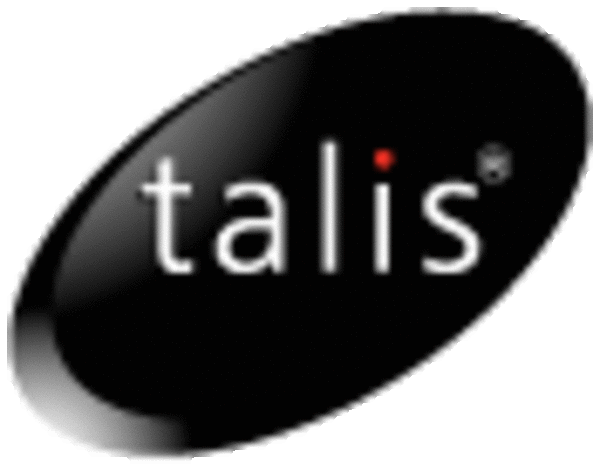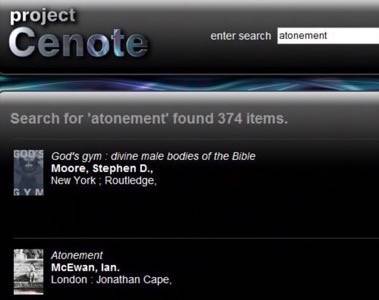This is a guest post by by Zach Beauvais.
Talis is a bit different than most web 2.0 startups we hear about. It is a 40 year-old technology
company with a significant presence in the UK – nearly a quarter of British
academic and public libraries make use of its software. Although the Web is a
prominent feature of the organization, their primary focus is on data
management.

Talis was recently featured as part of ReadWriteWeb’s 10
semantic apps to watch out for, and its tech evangelist Dr Paul Miller was interviewed by us. In this post we will review Talis’ technology and how it fits into the current era of the Web.
Following web 2.0 trends, Talis has made an open technology platform that encourages collaboration and the use of large stores of Semantic data. They
espouse the principle of the
perpetual
Beta, stating that: “Notions such as ‘finished’ or ‘complete’ have little
meaning in this context.” They even have a glassy, 2.0-style logo.
But, there is something different about the Talis ethos. From its faintly
philosophical blog and an academic approach to ‘evangelism’, you get the sense
that the folks behind Talis really
understand
the semantics they preach. Talis’ idea of marketing is to promote the
semantic web itself, rather than just trumping its own brand. They host podcasts with eminent figures in the
blogosphere, and discuss with confidence the bleeding edge of Semantic Web technology.
The Talis Platform
Did I mention platform? Although there are many applications on the Talis
website, its main focus is on the semantic platform it has built. The Talis
platform is a field from which its various applications (and developers using
the
Talis
Community Licence) can work their semantic magic. The Platform allows
unstructured data to be quickly sorted and stored, making it especially useful
to libraries and companies. Its Semantic elements are used in
conjunction with data mining and fast search technology, meaning that after data
is sorted and stored, it can be quickly and efficiently retrieved. In an
interesting twist, the Talis Platform is not intended to disrupt the WWW, but to work with the nodal structure of the web – allowing systems already in use
to access new forms of semantic data through their APIs and applications.
Basically, data in the Platform is stored in aptly-named structures called
‘stores’, which allow data to be accessed using metadata (machine readable
descriptors utilizing
RDF).
This data can then be accessed and linked from the Web, allowing easy access to
self-managed data stores, while still enabling the RDF Semantic components to
sort and examine the data. Linked in with the semantic filtering and
data-management is a strong control of data and their interrelations. Any
element of the data can be matched and controlled, allowing access to relevant
data rather than just returning simple search results. An example Talis gives for
this is in a retail context: a product can be found in multiple stores; but
using relevant retrieval, data can be returned for a specific store.
The upshot of the platform in combination with the Talis Community License is
that semantic mashups can be created. One such, a Firefox plugin (image right)
allows you to see which libraries across the UK hold a copy of the book you
happen to be looking for on Amazon.

Alongside the semantic parsing and data management of the stores, Talis is
constantly working on new ways to analyze the data. The Platform is
constantly learning new techniques and can make inferences from user behavior
and automatically discover relationships, thus bringing ever-richer results
for data applications.
Talis Applications
Talis’ own applications are wrapped up in the LMS (Library Management Suite) and
some complementary products designed for academic, public, and specialist
libraries. A quick Google search for “Talis Library” will return prominent
British institutions making use of various elements of the Talis LMS or using
Talis Platform technology alongside their pre-existing management software.
Although there are many products listed on the Talis site
(full
list here), to an outsider it is difficult to distinguish them all.
Each Talis application seems to offer a particular perspective on library
management. “Alto” is the integrated library management system which seems to
support everything a library could need, including the management of business
data and cataloguing. Talis also offers “Prism”, which is an OPAC (Online
Public Access Catalog) that allows online access to a library’s stock. They
also have a messaging and a mobile product (called Talis
Message and Talis Mobile respectively) which make library information easy to
access. Many of the applications on the Talis platform are either Mashups or
bespoke creations for a specified library’s needs. A good example is
Project
Cenote (image below), which is an aesthetically pleasing
interface for catalogues of books in stores, libraries and any other holdings.

Not being a librarian, I found it hard to make
distinctions between some of the systems. For example: the main application, the
LMS (Library Management Suite) includes Alto, which seems like a library
management system in itself. It is very clear however that to Talis,
libraries have multiple needs and so the company is determined to supply a product for
every eventuality. Many of Talis’ apps allow a library to put their content online in
a user-friendly and easily-accessed format.
One interesting example of this is
the
@
Your Library Wales interface. This is a portal being built by a third party
developer using the Talis Platform and Web Services. It allows Welsh libraries
to share their content while also providing other rich internet experiences, like
travel information and library finders. Their landing page (see below) hosts
content and links to the BBC, as well as links to other service-oriented applications.

Talis Evangelism
As mentioned above, the Talis evangelism team seems to promote the
Semantic Web as a notion; and it supports SW ideas and furthering of related
technology. The company holds hour-long talks with figures from the vanguard of semantic
development, and host several blogs as a discussion platform. Although obviously
Talis-focused, these ‘Talks with Talis’ and the blogs don’t simply spout
marketing-speak. They are asking and answering questions about the furthering of
Semantic Web – and they explore other unrelated tech to find possible relationships.
For me, the most interesting facet of Talis as an organization can be found in
their
Nodalities
blog. Here, aspects of the Semantic web are presented, analyzed, and opened up
for discussion regardless of where they are based. The lead article on 14th
December was an announcement and discussion of the Amazon.com product S3 (Simple Storage Service). The quality of discussion on these blogs is
phenomenal, and it is very refreshing to see a take on marketing which works
this way. Dr Miller, who also hosts the “Talks with Talis”, offers an academic
perspective on the Semantic web, and tends to approach his posts in an almost
lecture-like style. Topics within the library sector are covered under a
separate blog – Panlibus – which also includes interviews with representatives in
information architecture and data management.
One distinct downside to this approach, despite the benefits of being
professional and evoking a sense of confidence in their field, is that the
casual reader will find nothing which says exactly what Talis does. The
discussions are in-depth and appear to be thorough, but it is not easy to find
overview material – and if it does exist it often raises more questions than
answers.
Conclusion: So, What is Talis?
Talis seems to be exactly what they say: an innovation company. They promote
collaboration and work from a perspective of facilitation. Their main products
are focused on library management, and this stems from their semantic
technologies and data mining software. Their long heritage is blended
with a leading energy and an understanding of the most current technologies
across their sector. They even cover other companies innovations in their news.
Will you see the Talis name everywhere like you might a Semantic Web startup? I
don’t think so. But, if you’ve visited your local library, or logged into a
campus ISS catalogue (at least in the UK), the chances are that you’ve come
across Talis’ innovations quietly enabling your search and research.





















